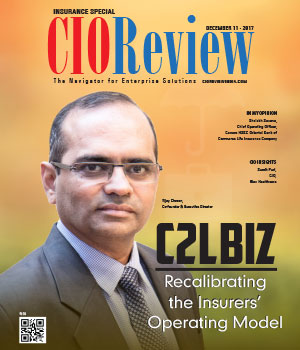
Salvaging the legacy: Tackling Leakages And Inefficiencies Of The Legacy Systems
Himanshu Gupta, COO | Monday, 17 May 2021, 11:05 IST

B+ in early 90s, when computers became usable by common folks, and when the internet started spreading its wings, insurers realised that they were at the cusp of an incredible technological shift which will put an end to paper mountains and strongrooms. They called in the pros; the IBMs of the world, to drive their body of work forward, with meaningful technology.
Hundreds of programs were written, for the people and for tin-can systems, with an aim to chip away at the mountains, one deployment at a time. Everything was hunky-dory and the transformation was steady, but rate of progression in external technological sphere, i.e. fresh data discovery with potential to strengthen their business models, across actuarial sciences, underwriting, collection, claims and other departments has outpaced the practice.
This gap leads to “leaks” in the process. Take for example, a scenario which many of today’s insurers are experiencing, called “premium leakage.” Inefficiencies, inaccuracies and risky processes due to the use of legacy systems cause carriers to unknowingly “leak” premium they should be collecting. While the solution to it could be as sim pleas taking a look under the sink and fixing it, the bigger challenge is to learn that there’s a leak in the first place. This is where many companies find it difficult to look beyond their ever-trusted legacy systems, and notice their shortcomings.
“The solution to eliminating premium leakage is the same as the solution to better mobility and flexibility: strengthening your core”
But as we look beneath the surface, we can see that legacy systems are causing some of the major pain points insurance carriers face; Multi-entry, siloed workflows, inaccurate data laced with manual errors, slow turnaround times coupled with redundant processes.
Why so many pain-points you may ask. Well, legacy system’s are notoriously incapable to handle data sharing across organisations, unless you build layers upon layers of ‘middle- wares’ only to notice that doing so adds more bulk, which further slows the systems down.
Legacy systems aren’t just painful, they’re costly. A recent study by FINEOS explains how around 5% to 10% of insurance premiums are lost in these leakages due to the inefficient legacy systems. There’re a myriad of reasons for a premium leakage, however, case onboarding and eligibility estimation related inefficiencies take the top shelf.
The solution to eliminating premium leakage is the same as the solution to better mobility and flexibility: strengthening your core. Because legacy systems and custom solutions are inherently prone to premium leakage, carriers must rethink their core system solutions to combat it.
So, what do these stronger core systems look like? They’re modular and integrated and allow data to flow freely between workflows. They’re also decoupled with purpose-built smaller systems, enabling the core to be a reliable source of truth, without the mess of handling transformational logic and running batch jobs.
Take for example, we helped a company develop a renewals management pipeline leveragingaserverlessarchitecture,whiledecouplingitfromtheinsurancecoresystematone of the largest general insurers in the country. And as a result, the decreased load on the core system has spurned a chain of similar projects to handle claims process, product configurations and sales reconciliation outside the core system.
Premium leakages can be eliminated when insurers decide to look under the sink, see the source of the leak for themselves and call in the plumber. In this case, the plumber comes in the form of a modern, SaaS-based solutions delivery vendor that can allow the insurers to address the costly inefficiencies caused by legacy systems, and keep the full measure of their projected premiums in their pocket while also providing a superior customer experience.
CIO Viewpoint
Insurance Tech Trends: Moving from Brick to...
By Dheepak Rajoo, Chief Information Officer, Royal Sundaram General Insurance
Easing the access to insurance with...
By Ayan De, Chief Technology Officer, Exide Life Insurance
Does an Organization's Digital Journey Warrant...
By Mudit Agarwal, Global IT Head, Uflex
CXO Insights
Significance of Customer-centric Digital...
By Janifha Evangeline
How tech will shape insurance operations in...
By By Ayan De, Chief Technology Officer, Exide Life Insurance
Transforming the Insurance Sector with Low Code




.jpg)
.jpg)





